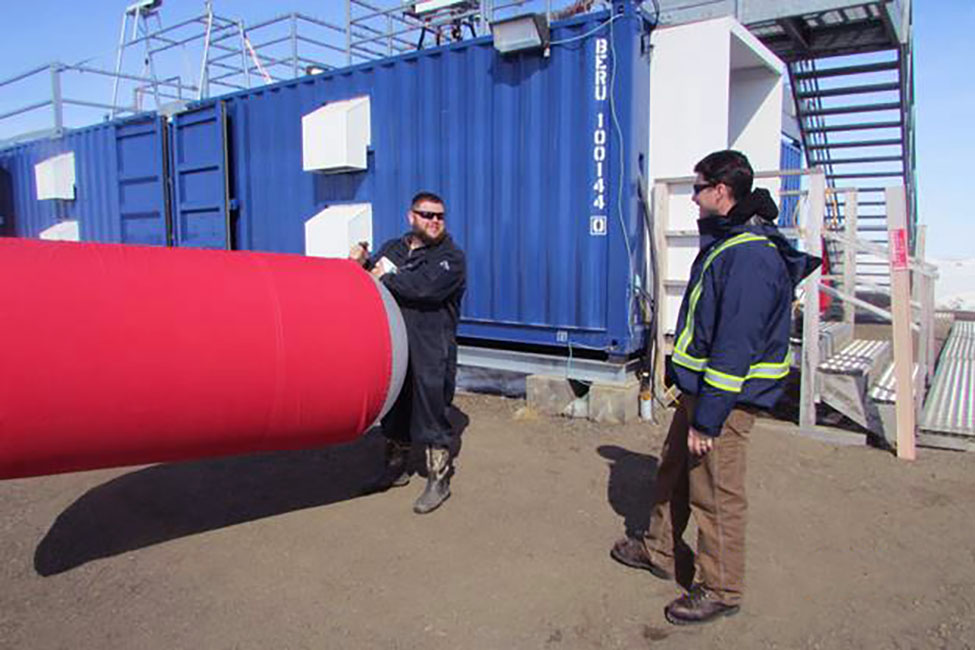ALBUQUERQUE, N.M. — For Justin LaPierre, helping maintain an atmospheric research station at the northern tip of Alaska is “eerily reminiscent” of being deployed in the deserts of Afghanistan — just much colder.

A U.S. Marine Corps veteran, LaPierre has worked as an observer at Oliktok Point for two years. The site is the third mobile station of Sandia National Laboratories’ Atmospheric Radiation Measurement research program, which has been monitoring atmospheric conditions and climate in the Arctic for more than 20 years.
For LaPierre, and about half of his current and former colleagues at Oliktok Point, their experience in the military is similar to daily life in Alaska.
With a team of three others, LaPierre works a rotating three-week shift maintaining the research instruments, infrastructure and grounds of the research station.
He compares the station to a forward operating base, an outpost remote from a main base that is fully supported by its own infrastructure. The mindset needed to work in Alaska is similar to that in a remote military outpost too, LaPierre said.
“I’m used to being away and doing the same thing day in and day out,” LaPierre said. “Especially here in winter when there’s a lot of snow shoveling to do, I know how to keep a positive mindset and keep moving forward to do the job at hand.”
The observers work 12-hour shifts performing general operations, such as snow removal, monthly checks of the generators and maintenance of four microturbines that allow the site to generate its own power. LaPierre and his colleagues also walk through the site twice daily to make sure the scientific instruments are functioning properly.
The combination of hands-on work with the scientific focus at this site makes this job a “perfect fit” for LaPierre’s background. Before his military service, LaPierre trained and worked as an electrician. In the Marine Corps, he worked in weather forecasting and data analysis. And after discharge, he utilized the Post 9/11 GI Bill to complete his education in natural sciences.
“Observers like Justin are key to ensuring we continue to have high-quality information about conditions in the Arctic,” said Fred Helsel, a Sandia engineer who manages the observers contracted to maintain the Oliktok Point site.
Data collected there by balloons floating through the atmosphere, radar monitoring clouds and instruments monitoring sunlight and snow complements information gathered at the program’s long-term site in Utqiagvik, Alaska, the city formerly known as Barrow. The monitoring is sponsored by the U.S. Department of Energy Office of Science, Biological and Environmental Research division.
